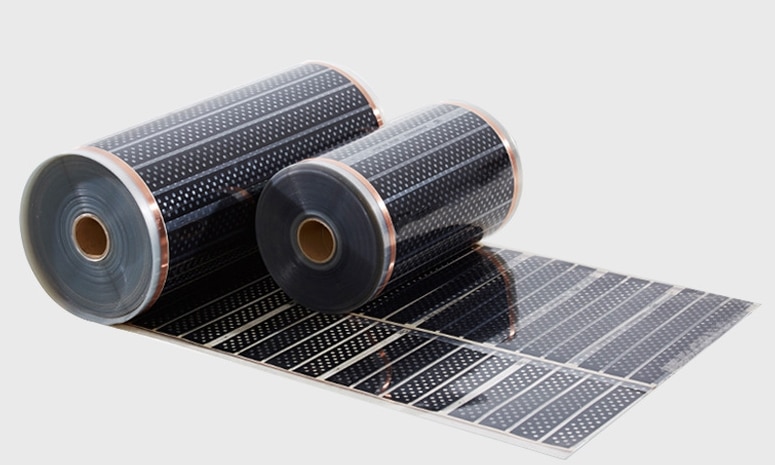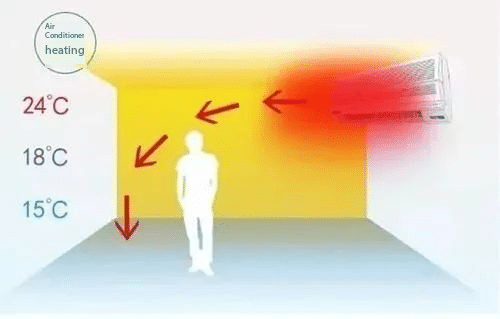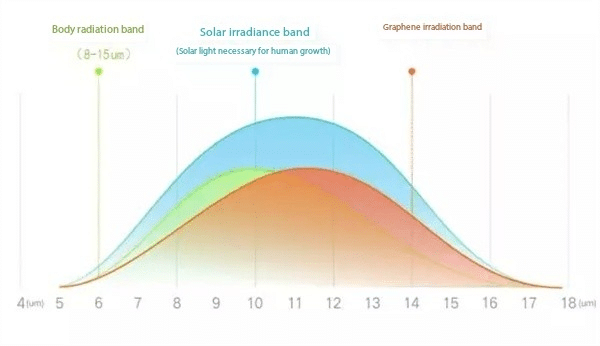Why is graphene heating film the number one most efficient underfloor heating in 2024? Here’s why
When the power is turned on, graphene electric heating film mainly emits heat in the form of far-infrared radiation. Compared with the traditional radiator heating method, graphene electric heating film heating system not only has good heating effect and energy saving, but also increases the user’s using area, reduces the amount of maintenance, and solves the problems of heavy pollution, difficult metering, and difficult charging brought by the traditional heating method. The energy-saving mechanism is introduced in the following aspects.
Table of Contents
ToggleWhat is heating film
Electric heating film is a kind of semi-transparent polyester film that can generate heat after being energized, which is made of conductive special ink and metal carrier strip or infrared radiation coating by printing and heat pressing between two layers of insulating polyester film (PET).
Graphene electric heating film preparation process - most efficient underfloor heating
The substrate is graphene composite + pet + copper + silver paste + copper conductor.
Graphene paste + front side coating process, belongs to the most advanced conductive film preparation technology.
The process is not only applicable to the production of graphene underfloor heating film, the original film can also be used for the preparation of heated wall panels, flooring, heated warm paintings and other products.
Water-soluble material combined with coating process, good uniformity, computer numerical control, accurate thickness and stable power.
Heat dissipation method of electric heating film
Theoretically, there are three basic ways of heat transfer: heat conduction, heat convection and heat radiation. Technically speaking, these three ways in general can not be separated, heat transfer is a comprehensive process, a certain way of heating is the main way of heating is said to be the way the heat transfer heating.
According to national standards GB8623-88, infrared radiation conversion efficiency > 50%, that is, infrared radiation transfer of energy more than half, and conduction and convection mode of transfer of energy and the sum of < 50% of the product can be called far-infrared radiation products. Ordinary electric heating film of electric radiation conversion efficiency is generally <70%.

Tested by professional organizations, Our graphene electric heating film electric heat radiation conversion rate up to 99.
Calculation of the amount of heat given off by most efficient underfloor heating
The expression for the amount of heat emitted by an electric heating film in heat radiation-based heating is.
(Where: Q is the heat of the electric heating film, E is the emissivity of the electric heating film, Rb is the blackbody radiation constant, T1 is the working temperature of the electric heating film, and T2 is the ambient temperature of the surroundings.)
Radiant heating in the heat and emitter temperature of the fourth power is proportional to the convective heating in the proportion is lower, that is, the temperature of the emitter has a greater impact on the radiant heating, and then infrared radiation heating film emissivity E is very high, generally in the 0.9 or so, indicating that radiant heating in the conversion rate of energy is high.
Far infrared electric heating film radiation energy propagation process - most efficient underfloor heating
Radiant heating consumes less energy in the air, has a high energy utilization rate, and has a good heating effect, which is fundamentally different from convective energy propagation.
Convection heating relies on an intermediate medium (air), where air molecules near the surface of a hot radiator absorb heat, increase in temperature and movement, and flow upwards into the space under the action of buoyancy forces, thus driving cold air towards the radiator.
Hot and cold air so reciprocating flow, so that the air temperature in the room activity area to ultimately meet the requirements. The characteristics of the hot and cold air flow determine that the air temperature in the upper part of the room is always higher than the temperature of the activity area where the person is located, which increases the waste of energy and leads to relatively low energy utilization in convection heating and poor heating effect.
The spread of radiant energy can not depend on the air medium, and the human body directly. And the main components of the air O2, N2 almost does not absorb infrared band energy, air only in direct contact with the heat source and the heated body (human body) to receive some energy.
For example, in winter we stand outside, once the sun on the body, although the outdoor temperature did not change substantially, the body will still feel warm.

Hot and cold air so reciprocating flow, so that the air temperature in the room activity area to finally meet the requirements. The characteristics of the hot and cold air flow decided that the air temperature in the upper part of the room is always higher than the temperature of the activity area where the person is located, increasing the waste of energy, resulting in convection heating in the energy utilization rate is relatively low, the heating effect is poor.
The spread of radiant energy can not depend on the air medium, and the human body directly. And the main components of the air O2, N2 almost does not absorb infrared band energy, air only in direct contact with the heat source and the heated body (human body) to receive some energy.
For example, in winter we stand outside, once the sun on the body, although the outdoor temperature did not change substantially, the body will still feel warm.

Mechanisms of heat gain in the human body - most efficient underfloor heating
Different heating methods, the human body and the surrounding objects to obtain energy in different ways.
The infrared radiation produced when the electric heating film works is part of the electromagnetic wave, the radiation energy projected to the human body, most of which is absorbed by the human body surface, and only a small part of the radiation transmitted into the human body and then absorbed. The larger the proportion absorbed by the human body, i.e., the larger the absorption rate, the higher the utilization rate of energy.

(The normal body temperature of the human body is around 37℃, and the peak wavelength of the electromagnetic wave generated is around 9.5μm. When the graphene electric heating film is connected to the power supply, it generates far-infrared life-living light waves with a wavelength of 8-15μm, which resonates with the cells of the human body and promotes the metabolism.)
In convection heating, they mainly get energy from the heated air by convection, so the air temperature in the room is always higher than the temperature of the surrounding objects. In radiant heating, they mainly obtain energy directly from the source of radiation in a radiant way, and the temperature of the air in the room is always lower than the temperature of the surrounding objects, which is also the reason why radiant heating is energy-saving. Experiments have proved that the room temperature under radiant heat condition is 16℃, which is equivalent to the convection environment of 18~20℃.
So this is why most efficient underfloor heating in 2024 is graphene heating film
